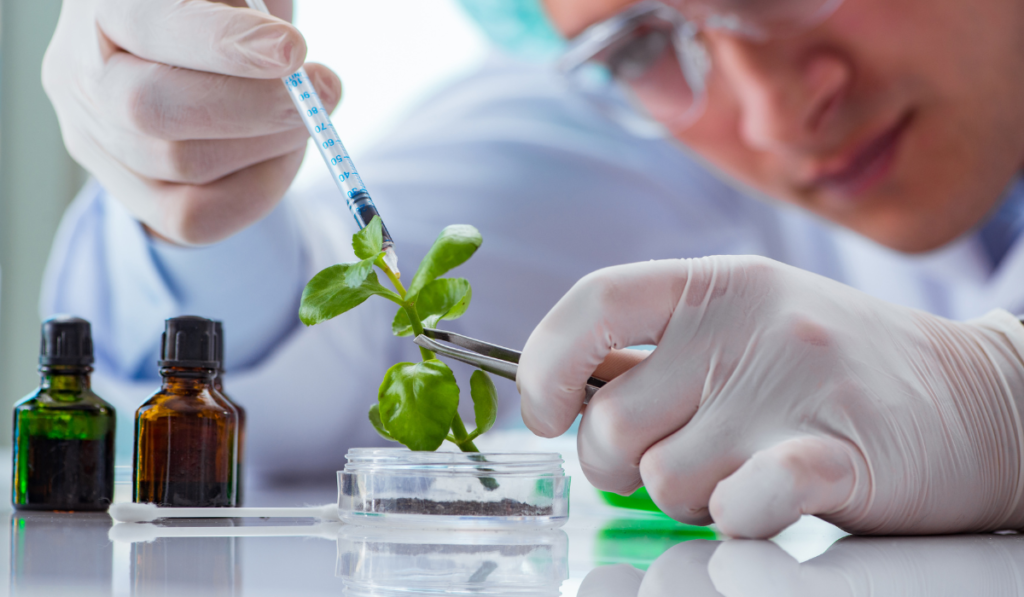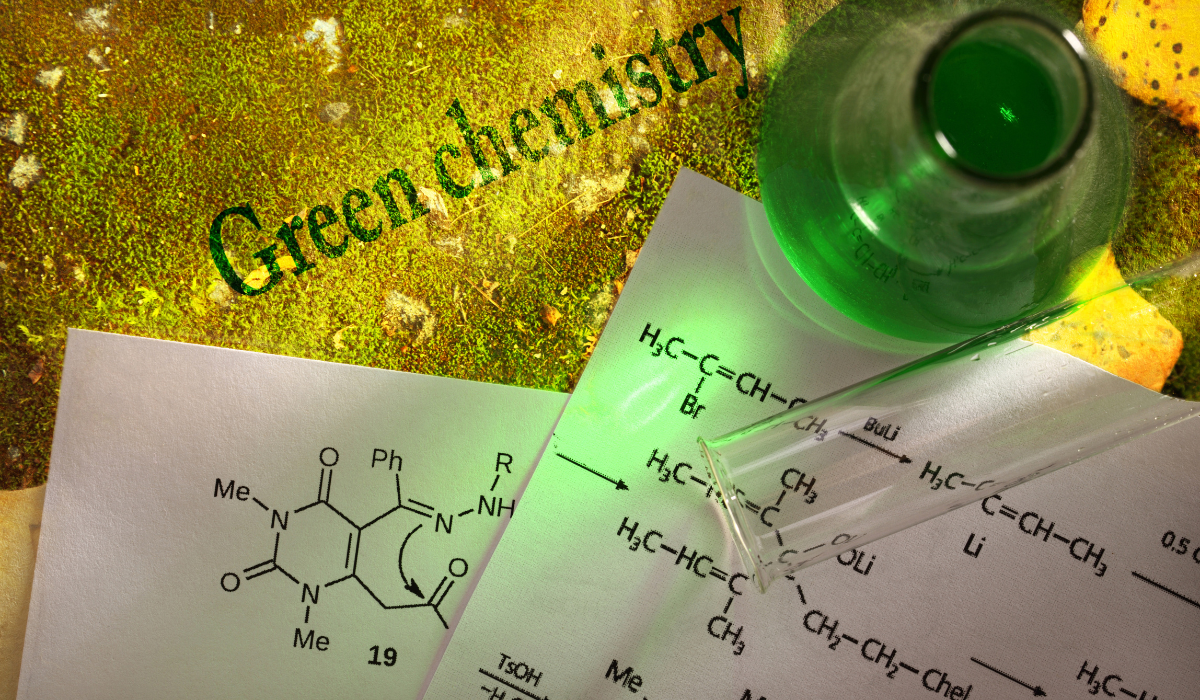Green Chemistry Explained: Your Complete Guide to Sustainable Chemical Practices
What is Green Chemistry? Green Chemistry is an innovative approach to chemical design and production that focuses on preventing pollution at its source by creating safer, more sustainable chemical processes and products. Are you curious about how chemistry can become more environmentally friendly without compromising effectiveness? Green Chemistry represents a revolutionary shift in how we think about and practice chemistry, offering solutions to some of our most pressing environmental challenges. In this comprehensive guide, we’ll explore the 12 fundamental principles of Green Chemistry and how they’re transforming the chemical industry. From waste prevention to energy efficiency, you’ll discover practical strategies that are making chemical processes more sustainable and environmentally responsible. Whether you’re a student, professional, or industry leader, understanding these sustainable chemical practices is crucial for contributing to a greener future. Let’s dive into the world of Green Chemistry and uncover how it’s revolutionizing the way we approach chemical innovation.
Key Takeaways:
- – Green Chemistry focuses on preventing pollution at its source through the design of chemical processes and products that minimize or eliminate hazardous substances.
- – The framework encompasses 12 fundamental principles that guide sustainable chemical practices, emphasizing waste prevention, atom economy, and energy efficiency.
- – This approach promotes the use of renewable feedstock and safer solvents while reducing the generation of hazardous substances throughout the chemical life cycle.
- – Green Chemistry principles directly impact human health and environmental protection by redesigning traditional chemical processes to be more sustainable and environmentally responsible.
- – The implementation of Green Chemistry practices aligns with global sustainable development goals and supports the sound management of chemicals across industries.
The 12 Core Principles of Green Chemistry
Waste Prevention and Atom Economy
The principles of green chemistry begin with a fundamental focus on preventing waste rather than treating it after creation. This proactive approach emphasizes designing chemical processes that maximize the incorporation of all materials into the final product. Atom economy, a crucial metric, measures the efficiency of chemical reactions by calculating the percentage of atoms from reactants that end up in the desired product.
Safe Chemical Design and Synthesis
Chemical processes should be designed to minimize the use and generation of hazardous substances. This principle encourages developing safer alternatives to traditional toxic solvents and reagents. Scientists now focus on creating chemicals that maintain their effectiveness while reducing potential harm to human health and the environment.
Energy Efficiency and Renewable Resources
Energy efficiency stands as a cornerstone of green chemistry, promoting chemical reactions that operate at ambient temperature and pressure whenever possible. This approach not only reduces environmental impact but also cuts operational costs. The use of renewable feedstocks, rather than depleting fossil resources, ensures sustainable production cycles and reduces carbon footprint.
Real-time Analysis and Accident Prevention
Modern green chemistry emphasizes the importance of real-time monitoring during chemical processes to prevent the formation of hazardous byproducts. This analytical approach allows immediate adjustments to maintain optimal conditions and ensure product quality. Additionally, chemicals should be designed in forms that minimize the potential for accidents, including explosions, fires, and releases to the environment.
💡 Key Takeaway: The 12 principles of green chemistry guide sustainable chemical practices through waste prevention, atom economy, safe design, energy efficiency, and accident prevention, forming a comprehensive framework for environmental responsibility.
Implementing Green Chemistry in Industrial Processes

The successful implementation of green chemistry in industrial settings requires a systematic approach to transform traditional chemical processes into more sustainable operations. This transformation not only benefits the environment but also often leads to improved efficiency and cost savings.
Process Optimization Strategies
Industrial chemical process optimization begins with a thorough assessment of existing reaction conditions. Companies can achieve significant improvements by focusing on temperature and pressure modifications, catalyst selection, and solvent optimization. Modern management practices emphasize the importance of continuous monitoring and adjustment of these parameters to maintain optimal performance.
One effective approach is to implement real-time process analytics that allow for immediate adjustments to reaction conditions. This helps maintain product quality while minimizing resource consumption. Industries can also benefit from implementing heat exchange systems and energy recovery mechanisms to reduce overall energy consumption.
Waste Reduction Techniques
Effective waste reduction in industrial processes starts with careful planning and design of chemical reactions. By adopting principles like atom economy and selecting greener solvents, companies can significantly decrease waste generation. Management practices should focus on establishing closed-loop systems where byproducts from one process become raw materials for another.
Companies can implement various strategies such as:
– Optimizing reaction stoichiometry to minimize excess reagents
– Using catalytic processes instead of stoichiometric reagents
– Implementing solvent recycling systems
– Developing recovery protocols for valuable byproducts
The key to successful waste reduction lies in viewing waste not as an inevitable outcome but as a design flaw that can be eliminated through careful process engineering and innovative chemical process design.
💡 Key Takeaway: Successful implementation of green chemistry in industry requires optimizing reaction conditions through real-time monitoring and establishing effective waste reduction strategies through innovative process design and management practices.
Best Practices and Success Stories
Academic Achievements
Leading universities and research institutions have made remarkable strides in advancing green chemistry principles. The American Chemical Society has recognized numerous groundbreaking studies that demonstrate sustainable chemical practices. For instance, researchers at MIT developed a novel catalyst that reduces energy consumption in pharmaceutical manufacturing by 40%.
These academic innovations often focus on developing safer alternatives to traditional chemical processes. A notable example comes from Stanford University, where scientists created a water-based reaction system that eliminates the need for harmful organic solvents, significantly reducing environmental impact.
Industry Applications
The analysis of best practice in industrial settings reveals impressive implementations of green chemistry principles. The Cleantech Alliance reports that major chemical manufacturers have successfully integrated sustainable practices into their production processes. For example, a leading pharmaceutical company redesigned their synthesis route for a popular medication, reducing waste by 85% and eliminating toxic solvents.
Several companies have transformed their manufacturing processes through green chemistry innovations. A prominent example is the development of bio-based plastics that decompose naturally, addressing both waste reduction and sustainability goals. These innovations have not only reduced environmental impact but also improved cost efficiency.
The collaboration between academia and industry has proven particularly fruitful. Through partnerships facilitated by the American Chemical Society, research findings are being effectively translated into practical applications. This has led to the development of more efficient catalysts, safer solvents, and improved waste reduction strategies across various sectors.
Success stories also emerge from smaller companies that have embraced green chemistry principles. A startup working with the Cleantech Alliance developed a revolutionary process for recycling electronic waste, recovering precious metals while minimizing environmental impact. This innovation demonstrates how green chemistry can create both environmental and economic benefits.
💡 Key Takeaway: Green chemistry success stories from academia and industry showcase significant achievements in sustainable practices, with innovations reducing waste, improving efficiency, and creating environmentally friendly alternatives to traditional processes.
Conclusion
As we conclude our journey through Green Chemistry, it’s clear that this innovative approach is more than just a trend—it’s a fundamental shift in how we practice chemistry for a sustainable future. The 12 principles we’ve explored provide a robust framework for transforming chemical processes, from waste prevention to energy efficiency, making them safer for both the environment and human health. By embracing Green Chemistry principles, we can significantly reduce hazardous chemical waste, optimize atom economy, and develop more sustainable chemical products. The transition to renewable feedstocks and cleaner synthesis methods demonstrates that environmental responsibility and chemical innovation can go hand in hand. Whether you’re a student, researcher, or industry professional, implementing these sustainable chemistry practices is crucial for driving positive change. Let’s commit to incorporating these principles into our work, contributing to a future where chemistry serves as a solution to environmental challenges rather than their source. Together, we can harness the full potential of chemistry to create a more sustainable world.
FAQs
What are the economic benefits of implementing green chemistry practices?
Green chemistry practices can lead to significant cost savings through reduced waste disposal fees, lower energy consumption, and decreased raw material costs. Companies often see improved efficiency, enhanced product quality, and better market positioning, resulting in increased profitability and competitive advantage.
How does green chemistry differ from environmental chemistry?
While environmental chemistry focuses on studying chemicals and their effects on the environment, green chemistry is proactive and focuses on designing chemical processes and products that prevent pollution from the start. It emphasizes prevention rather than treatment of environmental problems.
Can green chemistry principles be applied to existing chemical processes?
Yes, green chemistry principles can be retrofitted to existing processes through process optimization, substitution of hazardous materials, improved catalysis, and energy efficiency measures. This approach is called green chemistry optimization or green chemistry retrofitting.
What role does green chemistry play in addressing climate change?
Green chemistry contributes to climate change mitigation by promoting renewable feedstocks, reducing energy consumption, minimizing greenhouse gas emissions, and developing innovative solutions for carbon capture and storage. It also supports the transition away from fossil fuel-based chemicals.
How is green chemistry being incorporated into education and training programs?
Educational institutions are integrating green chemistry into their curricula through laboratory experiments, online certificate programs, and specialized courses. Many universities now offer dedicated green chemistry degrees and research opportunities to prepare future scientists for sustainable practices.
What are the main challenges in implementing green chemistry on an industrial scale?
The primary challenges include higher initial investment costs, technical limitations of existing technology, resistance to change from traditional methods, and the need for specialized training. However, long-term benefits often outweigh these initial obstacles.





Post Comment